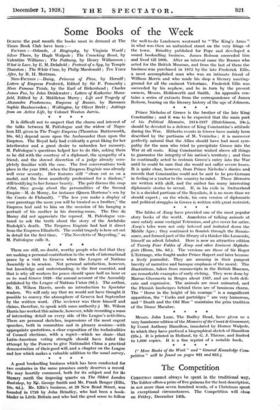The fables of ./Esop have provided one of the most
popular story books of the world. Anecdotes of talking animals at once satisfy some vestigial Totemism, and give cover for satire. lEsop's tales were not only beloved and imitated down the Middle Ages ; they continued to flourish through the Renais- sance, and formed part of the library of a thinker like Leonardo, himself an adroit fabulist. Here is now an attractive edition of Twenty Four Fables of zEsop and other Eminent Mytholo- gists (Benn, 10s. 6d.). The versions are those of Sir Roger L'Estrange, who fought under Prince Rupert and later became a lively journalist. They are amusing in their pungent brevity of narrative and baroque emphasis of the moral. The illustrations, taken from manuscripts in the British Museum, are remarkable examples of early etching. They were done by Marcus Gheeraerts in Bruges about 1567, and are both deli- cate and expressive. The animals are most animated, and the Flemish landscapes behind them are of luminous charm. The " Horse in the height of his courage " is a magnificent apparition, the " Cocks and partridges " are very humorous, and " Death and the Old Man " maintains the grim tradition of the Dame Macabre.
* * *








































 Previous page
Previous page